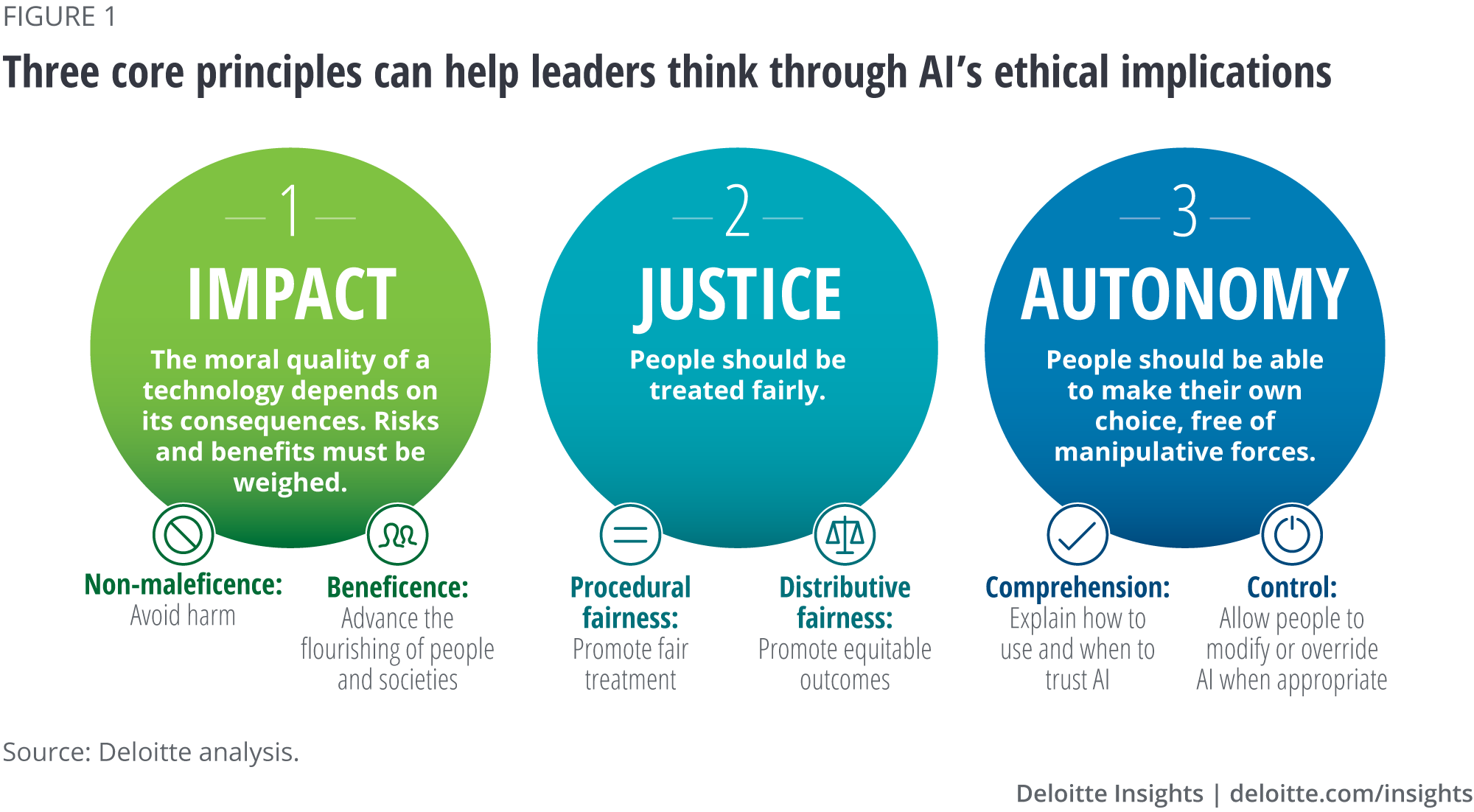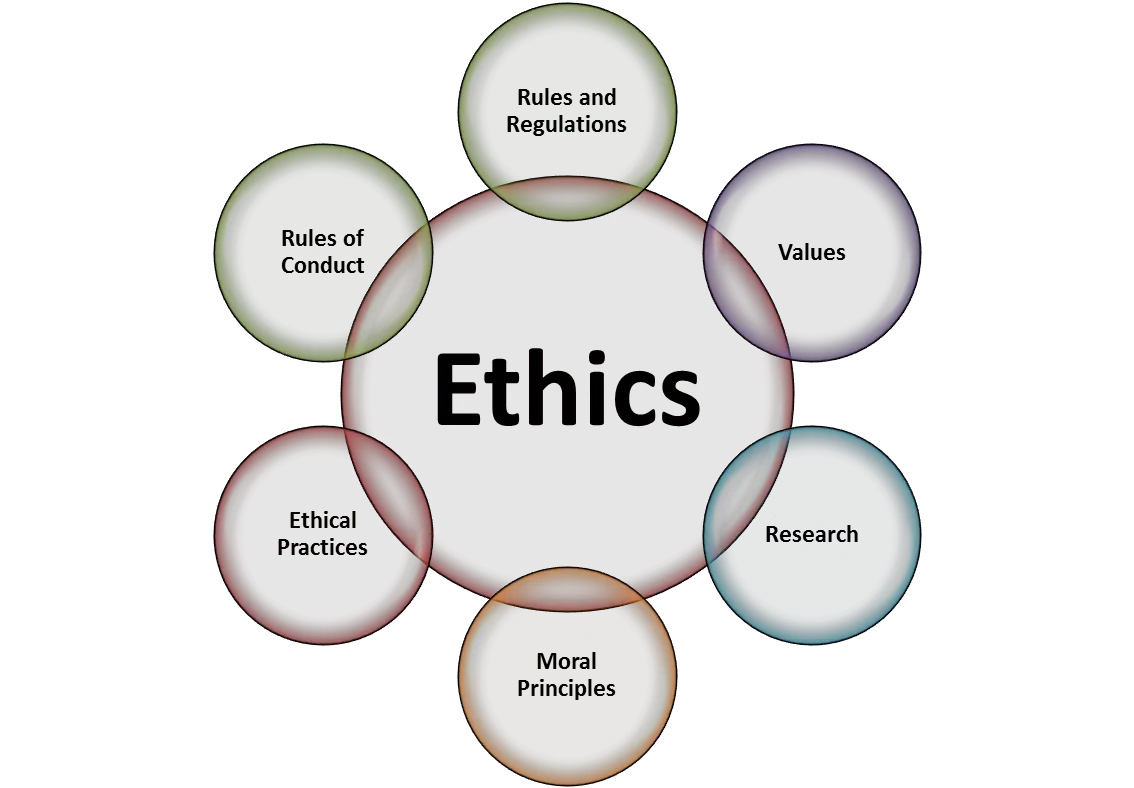Ethical AI Design: Principles and Practices

As artificial intelligence (AI) continues to advance at a rapid pace, the need for ethical considerations in its design and implementation becomes increasingly critical. Ethical AI design aims to create AI systems that align with moral values, principles, and standards, ensuring that these systems are used for good and benefit humanity as a whole.

Principles of Ethical AI Design:

-
Beneficence: AI systems should be designed to benefit humanity by promoting well-being, safety, and prosperity. They should avoid causing harm or negative impact on individuals or society.
-
Non-Maleficence: AI systems should be designed to minimize potential harm, including physical, psychological, and societal risks. They should be designed with safeguards to prevent unintended consequences and mitigate potential biases.
-
Justice: AI systems should be fair and just, treating all individuals equitably and without discrimination based on race, gender, ethnicity, religion, disability, or other factors.
-
Autonomy: AI systems should respect human autonomy and allow individuals to maintain control over their personal data and decisions. AI systems should provide transparent and explainable explanations for their actions and decisions.
-
Privacy: AI systems should protect the privacy and confidentiality of individuals’ personal data. They should only collect, process, and use data for legitimate and specified purposes, and should obtain informed consent when necessary.
-
Accountability: AI systems should be designed to be accountable for their actions and decisions. Organizations developing and deploying AI systems should be responsible for ensuring their ethical and responsible use.
Practices for Ethical AI Design:
-
Value Identification: AI developers should clearly identify and articulate the values and ethical principles that will guide the design and implementation of their AI systems.
-
Stakeholder Engagement: AI developers should actively engage with stakeholders, including users, experts, policymakers, and ethicists, to gather input and feedback on the ethical considerations of their AI systems.
-
Transparency and Explainability: AI systems should be transparent and explainable, allowing users and stakeholders to understand how the systems make decisions and why. This helps build trust and enables ethical oversight.
-
Bias Mitigation: AI developers should actively work to mitigate biases in their AI systems, including algorithmic biases, data biases, and representational biases. This involves addressing biases in training data, algorithms, and evaluation processes.
-
Risk Assessment and Management: AI developers should conduct thorough risk assessments to identify potential risks and harms associated with their AI systems. They should implement appropriate safeguards and mitigation strategies to minimize these risks.
-
Continuous Monitoring and Evaluation: AI developers should continuously monitor and evaluate the performance of their AI systems to ensure that they are operating ethically and responsibly. They should be prepared to make adjustments and improvements as needed.
-
Public Oversight and Regulation: Governments and regulatory bodies should play an active role in overseeing the development and deployment of AI systems. Clear guidelines, standards, and regulations should be established to ensure that AI is used ethically and responsibly.
By adhering to these principles and practices, AI developers, organizations, and policymakers can create AI systems that promote human well-being, uphold ethical values, and contribute positively to society.


This article provides a comprehensive overview of the ethical principles and practices involved in AI design. The emphasis on ensuring fairness, transparency, and accountability is crucial for building trustworthy AI systems. The practical tips for implementing ethical AI practices are valuable for practitioners and researchers alike.
While the article raises important ethical considerations, it fails to address the potential risks and unintended consequences of AI. The blind adherence to ethical principles can stifle innovation and hinder the development of AI for the greater good. A more balanced approach that considers both the benefits and risks is necessary.
The article ommited a crucial aspect of ethical AI design: user consent. AI systems must obtain explicit and informed consent from users before collecting and processing their data. Failure to do so undermines the principles of privacy and autonomy. Comprehensive ethical frameworks should include provisions for obtaining meaningful consent from users.
Oh, the irony! An article on ethical AI design filled with grammatical errors and syntaxic blunders. Perhaps the authors should practice what they preach and ensure their own content adheres to ethical standards, including clarity and accuracy.
Who needs ethical AI design when we can just blindly implement AI systems without considering the consequences? Let’s ignore bias, privacy concerns, and human oversight. After all, the ends justify the means, right?
Ethical AI design? That’s like trying to teach a parrot to recite Shakespeare! AI systems are too complex and unpredictable to be bound by pesky ethical guidelines. Let’s just let them run wild and see what happens. It’ll be a hoot!
Proceed with caution when designing AI systems. The ethical implications are profound, and we must tread carefully. Striking the right balance between innovation and ethics is paramount. Let’s not rush into deploying AI systems without fully understanding their potential impact.
This article ignites hope for a future where AI aligns with our moral values. Ethical AI design is not just a buzzword; it’s a necessity for creating AI systems that serve humanity with integrity and responsibility.
While the principles of ethical AI design are well-intentioned, their practical implementation remains challenging. The article fails to provide concrete solutions to address the inherent biases in data, the potential for malicious use of AI, and the lack of accountability in AI development.
Ethical AI design requires a deep reflection on the values and principles that guide our society. It’s not just about following a checklist; it’s about creating AI systems that embody the virtues of fairness, transparency, and accountability.
Imagine an AI system that’s so ethical, it refuses to work on projects that involve manipulating people or spreading misinformation. Talk about an AI with a conscience! Now, that would be a real ethical revolution.
The lack of emphasis on environmental ethics in AI design is concerning. AI systems consume vast amounts of energy and resources. We need to consider the ecological impact of AI and ensure it aligns with our ethical obligations to protect the planet.
Ethical AI design is like a beacon of hope in a tech world brimming with possibilities. By embracing these principles, we can harness the power of AI for good and create a future where technology serves humanity in a responsible and ethical manner.
The article provides a valuable framework for ethical AI design. However, it would benefit from a more rigorous analysis of the trade-offs involved in implementing these principles. Ethical considerations may sometimes conflict with other objectives, and it’s crucial to weigh these carefully to make informed decisions.